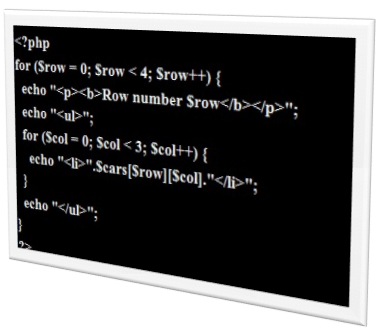A Brief History of PHP.
In 1994, an incredibly forward-thinking man named Rusums Lerdorf developed a set of tools that used a parsing engine to interpret a few macros here and there. They were not extravagant : a guest book, a counter, and some other ” home page” elements that were cool when the Web was in its infancy. He eventually combined these tools with a form interpretation (FI) package he had written, added some database support and released what was known as PHP/FI.
Then, in the spirit of open source software development, developers all over the world began contributing to PHP/FI. By 1997, more than 50,000 Web sites were using PHP/FI to accomplish different tasks – connecting to a database, displaying dynamic content, and so on.
At that point, the development process really started becoming a team effort. With primary assistance from developers Zeev Suraski and Andi Gutmas, the version 3.0 parser was created. The final release of PHP 3.0 occurred in June of 1998, when it iwas upgraded to include support for multiple platforms (it’s now just for Linux anymore !) and Web servers, numerous databases, and SNMP (Simple Network Management Protocol) and IMAP (Internet Message Access Protocol). Then the birth of PHP 4.0 occurred. No small version change, PHP 4.0 marked a complete rethinking of the PHP core and a rewrite of the internals of the spiriting language itself. The PHP development team and Zend Technologies produced a remarkable product with nearly a fifty-fold performance improvement over version 3.0, with a long list of new and useful features. When PHP 5.0 was released, it marked a rather radical change for the language, including new concepts of Object-Oriented Development and Database work.
WHAT DOES PHP DO ?
According to the PHP manual,
” The goal of the language is to allow Web developers to write dynamically generated pages quickly.”
Here are some common uses of PHP .
- Perform system functions: create, open, read from, write to, and close files on your system; execute system commands; create directories; and modify permissions.
- Gather data from forms: save the data to a file, send data vie e-mail, and return manipulated data to the user.
- Access databases and generate content on the fly, or create a Web interface for adding, deleting, and modifying elements withing your database.
- Set cookies and access cookie variables.
- Start sessions and use session variables and object.
- Restrict access to sections of your Website.
- Create images on the fly.
- Encrypt data.
These are just basic, everyday uses. PHP also includes support for integrating with Java servlets, XML, and Myriad and other Higher-Level functions. The possibilities literally are endless.






















